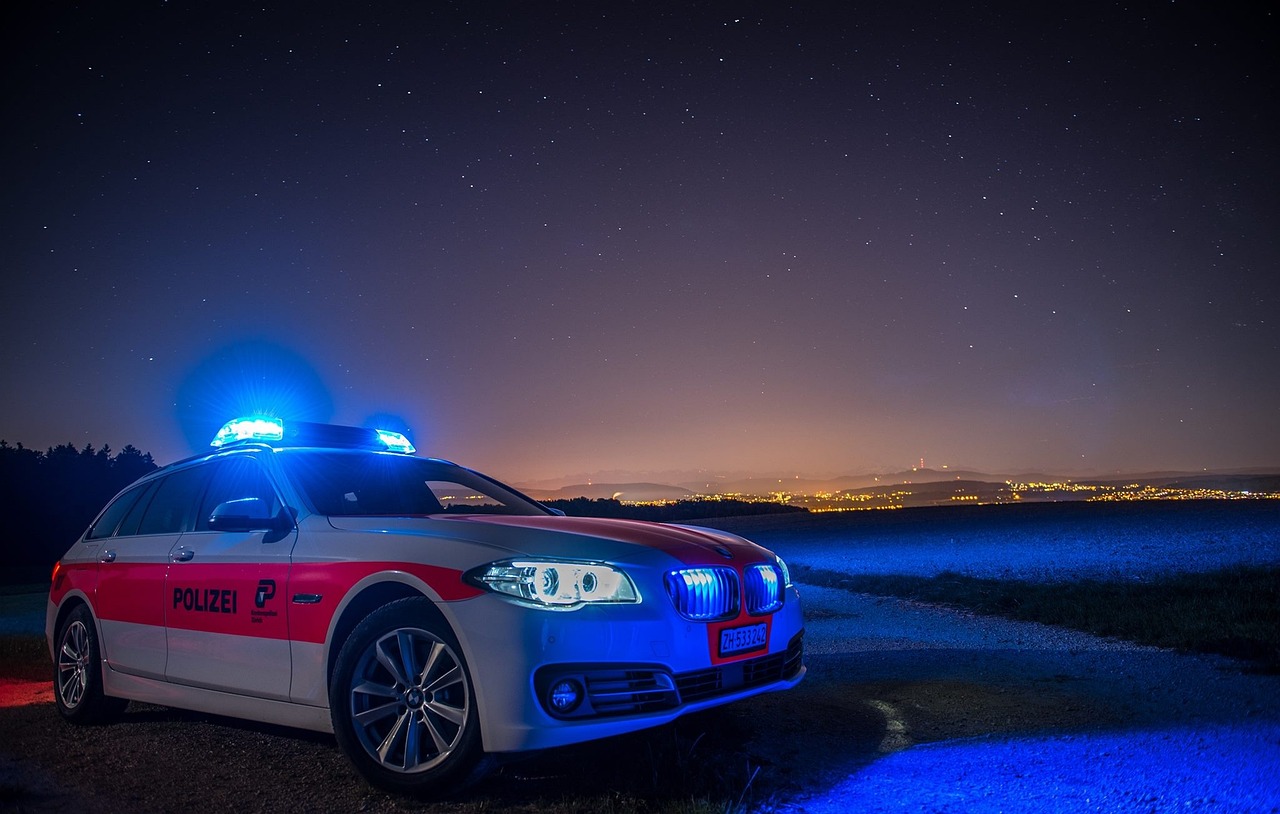Police car flashing lights alert other drivers that the car belongs to law enforcement, as well as signify that its driver is on patrol. Many states have laws specifying who may use flashing blue lights – this often includes municipal peace officers or university constables.
Laws vary between states, but most have “move-over laws”, requiring motorists to slow down or pull over when approaching emergency vehicles stopped on the roadway, and red light flashing during high-speed pursuits.
Red and blue lights are a symbol of law enforcement
Red and blue lights are a universally recognized symbol of law enforcement, and can be highly effective at getting drivers’ attention. Their brightness makes them visible even in poor weather conditions; humans’ eyes tend to be drawn toward rhythmically flashing colors that change gradually across a space or across time; they’re particularly effective during night time or low light conditions.
These flashing lights can be used to notify other drivers that a vehicle is police car or emergency vehicles such as firetrucks or ambulances, warn drivers about obstacles such as pedestrians on the road and indicate when someone may run a red light at intersections. They’re particularly useful at intersections where they indicate when someone may attempt to run one without stopping; flashing lights are sometimes combined with sirens designed to catch drivers’ attention and scare them into obeying traffic rules.
Most newer emergency vehicles feature color displays on their lightbars that allow for switching between German and English (HALT POLIZEI = STOP POLICE and PLEASE FOLGEN = PLEASE FOLLOW ME). In some instances, LED text displays can even read in either reversed writing if directed toward the front or plain language if facing towards the driver; green lights may even be used to denote command vehicles at incident sites.
They enhance safety
Flashing lights mounted to police vehicles to alert other drivers to their presence is an excellent way to increase safety, both effectively and cost-efficiently. But it must only be utilized during appropriate instances; otherwise it may become distracting or disorienting for other motorists.
Police cars with flashing blue lights can easily draw the attention of other motorists. Their purpose is to inform other drivers that it’s a police vehicle and should pull over when requested, as well as warn other emergency vehicles such as fire trucks and ambulances of their presence.
LED flashing lights differ from traditional red-and-blue warning lights in that they can be easily seen from a distance, as well as flash at different rates to signal specific messages, making them useful in many scenarios; such as showing that police officers are on their way to an incident site or approaching an intersection.
Newer police vehicle lights are designed to lower the risk of rear-end collisions by shutting off when a trooper opens their door, thus protecting drivers from being blinded by blinding lights when engaging suspects on the side of the road. Furthermore, an innovative feature allows lights to flash an alternating bright pattern when stopped and calling for backup – this has proven successful at significantly decreasing rear-end collisions between police vehicles parked along roadsides.
They communicate with drivers
Red and blue lights provide drivers with an effective means of communicating, including law enforcement officer presence. Red stands out among road signs and signal lights to clearly notify motorists when there is an officer nearby; flashing lights indicate it’s safe to pull over to let the officer pass by.
State laws dictate the colors and patterns of flashing lights used on police vehicles, with each jurisdiction having its own set of regulations regulating how flashing lights appear on these vehicles. Some agencies employ colored LEDs for creating various strobe and flashing effects while other agencies combine LEDs with conventional bulbs in order to increase vehicle visibility. LED lights also save police departments money through reduced power usage costs and maintenance expenses.
Some vehicles feature back-facing LED light bars that display messages to motorists, such as “HALT POLIZEI” or “BITTE FOLGEN – FOLLOW ME,” that can alert other vehicles of law enforcement or emergency response vehicles. It is important that flashing lights only activated when necessary – otherwise they may become a source of distraction that leads to accidents.
MSP fleet administration collaborated with a warning lights provider to test various flashing patterns ranging from fast, bright dazzles to slower more synchronized patterns at lower intensity levels. Their tests found that drivers tend to stare at bright flashing lights which may become distracting when driving at highway speeds.
They deter crime
Flashing lights on police vehicles can help deter crime by alerting drivers to their presence and informing them of law enforcement activity. But they should never be turned on unnecessarily or overused; doing so may confuse other motorists and lead them to misinterpret the meaning of these lights.
Studies have revealed the effectiveness of flashing blue and red lights to deter crime by making vehicles easier to recognize. They also help distinguish police cars from other emergency responders like firetrucks and ambulances, making it simpler for drivers to recognize which type of vehicle their police officer requests them to comply with.
Not only are most vehicles fitted with flashing blue and red lights, but some vehicles feature rear windows with illuminated back lights for signaling pedestrians. Some even boast amber directional control bars (arrow sticks) with flashing amber directional control bars (usually located behind their lightbar) flashing left/right patterns to direct traffic around their vehicle – these controls may vary depending on jurisdictional laws.
State laws typically regulate who can display blue lights and sirens on their vehicle, with some restricting use to specific types of vehicles such as volunteer firemen. While blue flashing lights cannot be used when responding to calls for service, some volunteer firefighters may have private vehicles equipped with red lighting for emergency use and public events.
